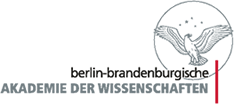IDP Berlin
Digitisation of the Chinese, Tibetan, Syriac and Sanskrit texts of the Berlin Turfan collection (DFG project)
Since 1995 exists a cooperation with the International Dunhuang Project (IDP) of the British Library which has allowed to enter the data into the IDP database. In 2006, the German IDP website was established for this purpose. The academy project Turfanforschung looks after the server IDP Germany and is therefore a partner in an international network of institutions with collections from Central Asia.
In the first step, the digital images of the Chinese and Tibetan fragments together with metadata have been entered into the IDP database. From 2008 to 2012, about 395 Syrian and 14,000 Sanskrit fragments as well as about 6,800 Tocharian fragments have been digitised and directly entered into the database.
Therefore these parts of the Turfan collection are available not only in the Internet but are presented in a database which contains also texts from other Central Asian collections. Step by step, all digital images of the Digital Turfan Archive I will be added to the IDP database so that in the future the complete Turfan collection will be accessible through the IDP website.
Between 2008 to 2009, the Turfan studies group was also partner in the European Union (central management education and culture, programme "Culture") funded project IDP-CREA (The Internationally Dunhuang Project - Cultural Routes of Eurasia). In the frame of this project, digital images from the digital Turfanarchiv I have been transferred into the IDP database and combined with metadata. A brochure of this project has been produced as well.
Signature group | Language/Content | Script | Number | Number of digital images |
Ch | Chinese | Chinese | 4.306 | 8.734 |
TibHT | Tibetan | Tibetan | 146 | 298 |
SyrHT | Syriac | Syriac | 395 | 628 |
SHT | Sanskrit/Prakrit | Brāhmī/Śāradā/Pāla/ | ca. 14.000 | 22.899 |
THT | Tocharian A/B | Brāhmī | ca. 6.800 | 8.114 |
In June, 2005 the workshop 'Digitisation of the Chinese, Tibetan, Syriac and Sanskrit fragments' took place in preparation of the project.





